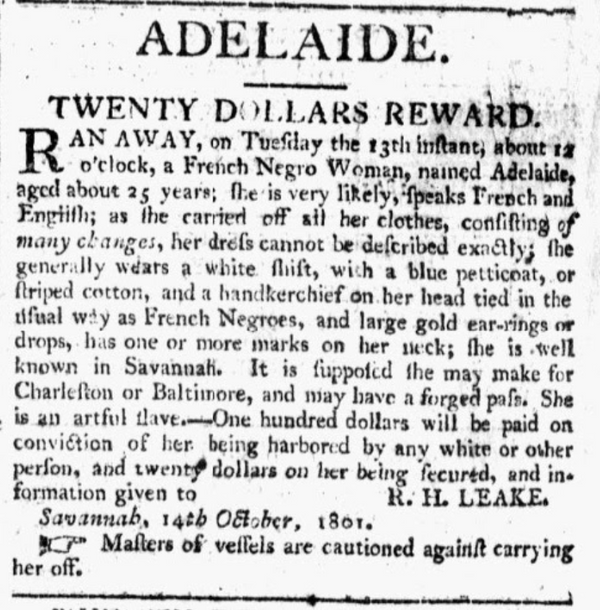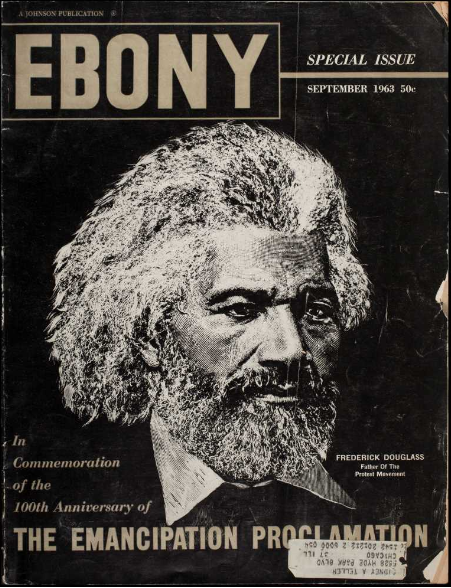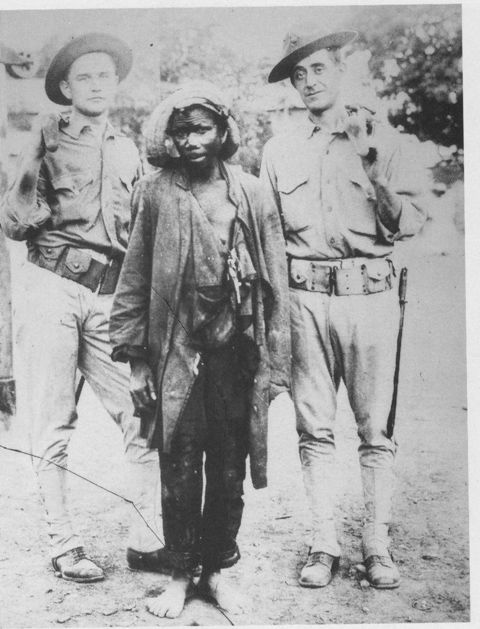By Renee Ong
Edited by Aurelia Dochnal '23, Michelle Medawar '24, and Rosemary Chen '24
1. Introduction
It could not have been easy for W.A. Graham. As the first and only top British representative responsible for Kelantan’s administration before it was officially colonized, his strong belief that the Malaysian state was ripe for economic exploitation often fell on deaf ears, given that Kelantan had been consistently overlooked by people near and far alike. In his seminal twentieth-century text on the state, Graham noted that Kelantan was “almost entirely unknown, not only in far-away Europe, but also in those parts… and even the other states of the Malay Peninsula which lie nearest to it” (Graham 1908, v). With this in mind, Graham’s thorough documentation of Kelantan state (especially the commercial potential of its lands) was, in his words, undertaken “in the hope of drawing some small share of attention of the public to the incipient prosperity and commercial possibilities of the state” (Graham 1908, vi). Given that Kelantan’s potential—and with it, Graham’s hopes—would eventually come to fruition in the following years, the state and its first decade of colonization by the British between 1909 and 1919 provide an ideal backdrop for examining how geography influences economic development.
This essay aims to evaluate the validity of Acemoglu et al.’s arguments linking geography and economic growth through the lens of colonial Kelantan. According to their theory, geography determines the types of institutions established in a region, which in turn influence the region’s economic development. Though the case of Kelantan does appear to conform with this causal relationship, it does not agree with the link between geography and institutions through disease incidence and European settlement rates. Specifically, Acemoglu et al. claim that mortality rates were the “key determinant” of geography’s impact on institutions, as regions with higher disease incidence experienced less European settlement and thus more extractive institutions. However, the validity of this pathway comes into question when examining the early colonial history of Kelantan. Despite the Malaysian state’s high disease incidence and low European settlement rates, Kelantan still enjoyed the establishment of relatively “good” institutions during the first years of colonization, contradicting Acemoglu et al.’s theory. Additionally, Kelantan’s shift from “good,” less extractive institutions to more extractive ones within the first decade of its colonial rule was not accompanied by a marked change in disease incidence or the number of British settlers in the state. As such, we must reconsider what accounts for these trends.
Interestingly, I find evidence that “good” institutions were established when Kelantan’s commercial viability had not yet been successfully tapped into, while Kelantan’s following improvement in institutional quality seems to be the result of the discovery and exploitation of its natural mineral resources. In opposition to Acemoglu et al.’s hypothesis, I argue that the discovery of colonial Kelantan’s commercial potential was the key causal link dictating geography’s impact on the quality of institutions in the state.
1.1. Existing Scholarship
Before exploring the existing literature, it is important to clarify that for the purposes of comparison, this paper will employ Acemoglu et al.’s definition of what constitutes “good institutions.” Thus, the three crucial elements will include:
(1) the enforcement of property rights for a broad cross section of society, so that a variety of individuals have incentives to invest and take part in economic life;
(2) constraints on the actions of elites, politicians, and other powerful groups so these people cannot expropriate the incomes and investments of others or create a highly uneven playing field; and
(3) some degree of equal opportunity for broad segments of the society, so that they can make investments, especially in human capital, and participate in productive economic activities. (Acemoglu et al. 2006)
To explain the linkages between geography, institutions, and economic development, Acemoglu et al. utilize European colonization rates from the 15th century onwards as a natural experiment of their theory. The authors conclude that geography could not be the main explanatory factor behind the “reversal of fortunes,” as many regions that were wealthy pre-colonization are among the poorest today (and vice versa for poor societies pre-colonization), despite their geography remaining more or less unchanged (Acemoglu et al. 2006). Instead, Acemoglu et al. conclude that the “reversal of fortunes” is in line with the predictions of the institutions hypothesis and institutional reversal: to put it simply, “relatively rich places got worse institutions, and if these institutions were really important, we should see these places become relatively poor over time,” which did indeed occur (Acemoglu et al. 2006).
However, geography may have had an effect through institutions. Acemoglu et al. state that “a key determinant of whether Europeans set up good institutions or not is whether they settled in large numbers,” and potential disease incidence was a major factor that explained “much of the variation in settlement rates” (Acemoglu et al. 2006). In essence, lower disease incidence leads to higher rates of European settlement; in areas with numerous European settlers, these Europeans often created more inclusive institutions for their own benefit (Acemoglu et al. 2006).
1.2. The Case of Kelantan
In comparison, the case of Kelantan suggests that the influence of geography through the presence (or lack thereof) of good institutions was not through disease incidence and subsequent settlement rates, but through the level of commercial exploitation of the region’s geography colonizers could achieve.
While Acemoglu et al. briefly mention this specific pathway as a possibility, they place little importance on it relative to disease incidence. Importantly , this is not to say Acemoglu et al.’s theory of geography’s impact on levels of European settlement through disease incidence is completely inapplicable to the Kelantan case. Indeed, as will be discussed later, Kelantan’s tropical climate did lend itself to increased risk of contracting malaria and dengue, which correlated with the low incidence of settlers in the state. However, as stated before, high disease incidence and low settler rates did not initially lead to the establishment of extractive institutions in Kelantan. Moreover, the shift in Kelantan’s institutions from good/weakly extractive to increasingly extractive was not accompanied by much of a change in disease incidence or settlement rates. Instead, this shift appears to correlate with the discovery of Kelantan’s commercial potential as a source of natural extraction.
As this paper will detail, during the first several years of colonization, the British had yet to determine how to truly exploit Kelantan’s geography for commercial purposes. With little to extract, settlers established a mix of good and weakly extractive institutions. However, Kelantan’s commercial potential came to fruition not long after, a phenomenon closely followed by the establishment of new extractive institutions and the transformation of existing ones to be more extractive.
This paper is organized as follows. Section 2 discusses Kelantan’s geography and climate, as well as its impact on British settlement rates. Section 3 discusses British colonization in Kelantan from 1909 to 1913, connecting the low commercial viability of the region’s geography to the establishment of weakly extractive and even “good” institutions. Section 4 covers Kelantan’s British administration from 1914 to 1919, when the profitability of the state’s newfound plantation economy gave way to increasingly extractive institutions. Section 5 covers the impact of extractive institutions on Kelantan’s economic development, as well as briefly describing the case of Penang to support this novel theory of how geography influences institutions. Section 6 discusses the alternative theory of geography’s direct impact on Kelantan’s economic status, rather than through institutions. Section 7 concludes.
2. Geographic Review
2.1. Description of Kelantan’s Geography and Climate
Kelantan’s physical landscape includes four major regions: a small coastal area that opens up to the South China Sea, plains near the coast, forests with interconnected river systems, and a series of mountains that grow increasingly precipitous near the western border. Of particular importance are the latter three regions. The flood plains and the forest both lend themselves favorably to agricultural cultivation, contributing to Kelantan’s commercial promise. The flood plains near the coast are incredibly conducive to rice growing, as the Kelantan Delta has extremely rich soil and is friendly to the irrigation needed for rice paddies (Graham 1908, 10). Similarly, the wide swathes of forest land and abundant water sources are ideal for the cultivation of oil palm, coconut, rubber, and tobacco (Dobby 1951). Kelantan’s mountain range, on the other hand, is notable for its role in somewhat isolating Kelantan from the rest of Malaysia. Indeed, W.A. Graham noted that ascent of the mountains entailed “days of wandering amidst pathless jungle, the imminent risk of exhaustion and starvation and the certainty of malaria” (Graham 1908, 6). As for the climate, Graham’s description of Kelantan as “mild and equable” was quite a generous assessment, as the state is also characterized by strong humidity and high temperatures (Graham 1908, 14). Even today, Kelantan consistently receives a strong amount of rainfall each year and also suffers from a heavier monsoon season compared to other Malaysian states.
2.2. Geography’s Impact on British Settlement Rates
Acemoglu et al.’s theory of geography’s influence on institutions through disease incidence and settlement rates at least partially applies to colonial Kelantan. Malaria and dengue thrive in high temperatures, humid conditions, and sufficient rainfall, all of which are more than satisfied by Kelantan’s tropical climate.
The high rate of disease incidence did seem to have an impact on the incredibly low rates of European settlement in the state. This scarcity was also exacerbated by Kelantan’s aforementioned isolation due to its formidable western mountain range, which made transport and travel arduous at best and fatal at worst. At the time, British officers in Kelantan would often hold multiple administrative and judicial positions at the same time due to lack of personnel. In 1929, 20 years into Kelantan’s colonization, six British officers in the Land Office were responsible for 13 posts; ten years after that, Kelantan’s total European personnel had only increased to a meager 18 British officers (Chan 1965, 196).
However, it is difficult to conclude that these low settlement rates led to the establishment of extractive institutions in Kelantan. The transformation of Kelantan’s institutions from good or weakly extractive to noticeably extractive was not accompanied by much change in British settlement rates, which did not seem to change much at all. Rather, this shift seems to have aligned more with the recognition of Kelantan’s commercial potential as an agricultural producer.
3. British Administration in Kelantan, 1909-1913
During the earliest years of British rule in Kelantan, the commercial viability of the state as a source of natural extraction remained both elusive and questionable. Facing little possibility of natural extraction, the British turned their focus to both establishing their political presence in the state through relatively “good” institutions.
3.1. Failed Attempts at Commercializing Kelantan’s Geography
Failed attempts at profiting from Kelantan’s natural resources began with Robert Duff, a British officer in the Straits Civil Service who had noticed Kelantan’s natural abundance during his time in the state; afterwards, Duff returned to Britain to form a syndicate in 1900 in the hopes of exploiting Kelantan’s mining potential (Robert et al. 1972, 84). When the Duff Company was established, Kelantan was still officially ruled by Sultan Muhammad II, though it was widely recognized that Siam (now Thailand) directly to the north of Kelantan wielded the real political power. Siam’s interest in Kelantan was “never about profit” and more about expanding the Siamese political sphere of influence, as well as protecting their strategic and military interests in the region (Hawksley 2001, 154). After forming the syndicate, Duff was able to obtain a concession for two regions in Kelantan with generous administrative authority over legislation, taxation, and even their judicial systems (Chan 1965, 162). In exchange, Duff agreed to pay the Sultan a portion of the syndicate’s future profits, export taxes, and a hefty upfront fee (Hawksley 2001, 90).
Facing investor pressure to turn a profit, the Duff Company began mining in the state, but returns were shockingly poor and transport costs were high. By 1910, Duff was forced to recognize his failure to harness Kelantan’s geography for the syndicate’s commercial interests (LeVos 1997, 11-12). Not one to give up easily, Duff made a second attempt at exploiting Kelantan’s natural abundance by leasing land in Ulu Kelantan for coconut and rubber cultivation. Though the land was suitable for planting, this venture also struggled. The Duff Concession suffered from inexperience with the crops, the growing pains of entering a yet-untapped industry in the state, and poor health as a result of “the tropical conditions, combined with inadequate plantation sanction, infection, and disease” (Hawksley 2001, 168). In short, Kelantan’s commercial viability as a source of natural extraction was weak at best and disastrous at worst, which would come to influence the quality of the institutions established in the state.
3.2. Establishment of Weakly Extractive and Good Institutions
Britain’s official claim to Kelantan was solidified with the Anglo-Siamese Treaty of 1909, under which Kelantan became part of the Unfederated Malay States, a consortium of standalone British protectorates (LeVos 1997, 10). Like the Siamese, British interests in Kelantan were largely based on political concerns. Britain was primarily interested in broadening its influence in the Malaysian Peninsula (particularly in the north) and preventing other European powers like Germany and France from intervening in the region (LeVos 1997, 9). It seems that Kelantan’s geographic location, rather than its climate or natural resources, was the motivating factor behind its colonization.
Most importantly, because there was little to extract in the way of Kelantan’s commercial potential, the British simply focused on establishing their dominance through a mix of institutions that were weakly extractive or even “good.” In fact, the “dual objective of British presence was to develop Kelantan economically so as to make it more profitable […] but also to raise the educational health and general living standards of the people” (Hawksley 2001, 176).
The colonial government largely exhibited good governance regarding property rights. It ensured land was available to Malays for agricultural purposes while simultaneously “transforming Kelantan into a modern administration” with an efficient and organized land grant system (Hawksley 2001, 157). In contrast, the government’s institutions regarding constraining the actions of elites were more weakly extractive than “good.” The British administration more or less left the power of local elites untouched in name, continuing to function through Kelantan figureheads and organizational structures (Hawksley 2001). In practice, the British began subverting the power of Kelantan elites, particularly by “removing the dispensation of justice from the Sultan and confining it to the judicature” (Hawksley 2001, 191). Though the colonial government did move to consolidate administrative power in its favor, dictating government policy and filling most key positions with fellow Europeans (Chan 1965, 196), officials did not extensively exploit this power. As for guaranteeing equal opportunity to participate in productive activities, the British administration established more schools in the state to increase enrollment and passed enactments regarding the protection of laborers’ health (Hawksley 2001, 196-199).
Overall, British institutions in the first four years of colonization can be classified as mostly “good” or weakly extractive. With few viable prospects of commercializing Kelantan’s natural geography and climate, the British were more concerned with cementing their presence in the region than establishing extractive institutions.
4. British Administration in Kelantan, 1914-1919
Kelantan’s commercial viability was only fully established once the Duff Company successfully harnessed Kelantan’s geography and climate to create a profitable plantation economy. These actions, combined with the Kelantan government’s need to repay huge debts, led to a shift in institutional quality aimed towards greater extraction.
4.1. Profiting from Kelantan’s Geography
Half a decade into British colonization of Kelantan, the Duff Company finally determined how to exploit Kelantan’s geographically-ordained commercial profitability by shifting away from mining and towards plantation agriculture. Records from 1919 indicate the value of Kelantan’s exports was five times that the total state revenue, with one agricultural product in particular—rubber—accounting for an astonishing 65 percent of exports (Hawksley 2001, 242). The Duff Company also enjoyed success in harnessing other aspects of Kelantan’s geography for profit, including cutting down Kelantan’s vast forests for timber, a lucrative commodity in high demand given the booming construction of buildings and railroads (LeVos 1997, 12).
At the same time, Kelantan faced crippling debt, making the Duff Company’s commercial profitability all the more vital to the state’s survival. While this debt was largely derived from outstanding pre-colonization Siamese loans and inefficiencies in government administration, such financial issues were compounded by a court ruling resolving disputes over the 1912 Deed of Cancellation between the Kelantanese government and the Duff Syndicate. This ruling canceled all previous agreements and limited the Syndicate’s land and power (Hawskley, 2001, 174; LeVos 1997, 14). The British courts had ruled in the Syndicate’s favor and ordered the government to pay hefty compensation for lost revenue, though when the verdict came into effect in 1912, 1925, or somewhere in between that seems to have been a source of disagreement (Hawksley 2001, 174; LeVos 1997, 15). Nevertheless, Kelantan’s crippling debt “converted Kelantan from a nominally independent protected Melay state into a district of an emerging British Malaya,” as the colonial government was forced to take out a loan of over 4 million sterling from the Federated Malay States, thus indebting it to the British (Hawksley 2001, 178; LeVos 1997, 15).
The Duff Concession had become “the center of the plantation economy” and Kelantan’s most promising source of growth, while the state’s debt problem made economic profitability all the more imperative. Combined, these two factors likely accelerated the shift towards increasingly extractive institutions. Unsurprisingly, the Duff Syndicate additionally exerted great pressure on the British government to foster and support this growing backbone of the Kelantanese economy (Robert et al. 1972, 88). In response, “British rule fashioned a set of economic and labor relations that served to create a modern extractive economy” (Hawksley 2001, 242).
4.2. Increasingly Extractive Institutions
As natural resource extraction became commercially viable and the need to increase state revenues became more urgent, British institutions became increasingly extractive. Regarding property rights, while 1915 land reforms abolished the right of appeal in cases concerning land in order to increase land tax revenues, the Kelantan court system was already “a primary means of enforcing British designs” (Hawksley 2001, 190). Thus, this reform marked a shift in the enforcement of property rights for the worse. In the same vein, local institutions decreasingly constrained the actions of elites: another sign of the increasingly extractive nature of such institutions. Dropping the pretense of Kelantanese authority, the British administration ensured the Kelantanese elite were “gradually removed from positions of control and authority within government offices and departments” and replaced by their European counterparts (Hawksley 2001, 254). The legislative and judicial systems also moved to reinforce the power of the British elite, with the State Council becoming “a rubber stamp for the wishes of the British advisor” and the court systems abolishing the historic right to appeal to the Sultan if a judicial decision had gone against one’s favor (Hawksley 2001, 231). Interestingly, institutions in Kelantan concerned with equal opportunity—particularly providing health services—were expanded, though more so for the benefit of elites than their plantation employees. For the benefit of the general population, access to and quality of healthcare continued to grow throughout the state. At the same time, these improvements in health services were meant to boost the profitability of plantations by ensuring the health of laborers. Doctors monitored the physical conditions of such indentured laborers on rubber estates, isolated or removed diseased laborers to prevent infection, and used western medicines to fight diseases on the plantations (Hawskley 2001, 197-199). Considering the three dimensions of “good” institutions, it is clear that institutions in Kelantan became more extractive once the ability and the need to pursue extraction for profit were both introduced.
5. Impact of Extractive Institutions on Future Economic Development
5.1. Economic Development of Kelantan
Why does the presence of extractive institutions in Kelantan’s history of colonization matter today? To answer this question, we return to the findings of Acemoglu et al., who pointed to the connection between the historical establishment of extractive institutions and stunted economic development:
Extractive institutions have a lot of staying power; for example, groups who benefit from using the power of the state to expropriate others will resist and attempt to block any move toward better institutions. As a result, in many cases extractive institutions have persisted from colonial times to today and still adversely affect economic growth. (emphasis mine; Acemoglu et al. 2006)
In line with this theory, Kelantan has exhibited poor economic development vis-à-vis other Malaysian states and the nation as a whole. Kelantan claimed the lowest average GDP per capita in 2017 (excluding federal territories), with RM13,593 well below the national average of RM42,228 (Department of Statistics Malaysia 2017). Additionally, Kelantan claimed the lowest mean monthly household incomes of any state in 2016, with an average of RM4,214 as compared to the national average of RM6,958 (Department of Statistics Malaysia 2016). In fact, 85.3 percent of Kelantan’s households had a mean monthly household income below that of the national average (Khazanah Research Institute 2018, 17).
5.2. Theory Applicability: British Administration in Penang, 1786-1796
In order to test the applicability of this alternative link between geography and institutions, this paper will briefly discuss the first decade of British colonization in Penang, another state in Malaysia. Penang, one of the richest states in Malaysia today, had little natural extraction potential and thus enjoyed the establishment of “good” institutions, despite having low European settlement rates throughout its first ten years of British rule.
Initial British interest in Penang’s geography was due to its ideal location, not the potential for natural extraction (of which it had little). Penang, which was known as Prince of Wales Island until 1867, was “virtually uninhabited and had excellent shelter and water for sailing vessels plying the India-China run” (Encyclopaedia Britannica 2018). British Commander Francis Light, who pushed for the British colonization of Penang, promoted the state to the East India Company as a suitable candidate for an outpost along the Malay Peninsula (Encyclopaedia Britannica 2019). Within a year of the East India Company’s agreement to establish a presence in Penang in 1786, the island of Penang was annexed; the adjacent mainland included today as part of the state was not annexed until 1800 (Encyclopaedia Britannica 2019).
Like Kelantan, early attempts to exploit Penang’s commercial viability as a source of natural extraction largely failed not because of geography, but because settlers had not yet understood how to exploit this geography. A 1790 attempt to cultivate peppers was successful in practice, but a price drop in the pepper industry hurt the prospect of profitability (Shimomoto 1980, 93). Other attempts to grow nutmeg and cloves were mostly unsuccessful, as “these plantations required a large capital investment” that they apparently lacked (Shimomoto 1980, 93).
Also similar to Kelantan in its early colonial years, the low level of potential extraction led to the establishment of less extractive institutions. As with the other Straits Settlements colonies, Penang was founded as a free port and “therefore had tax and labor systems in place that helped [it] take advantage of [its] strategic trading location to become [a] global economic center” (Lange et al. 2006, 1443). Owing to the multiethnic nature of Penang’s permanent and transient population and the importance of fostering an attractive, stable business environment, the British administration in Penang embraced inclusivity and social plurality (Ooi 2015).
However, what is of note is that the establishment of “good” institutions in Penang was not correlated with levels of European settlement. Like Kelantan, disease incidence of malaria and dengue remained high, while European settlement in Penang remained quite low. Light arrived in 1786 with five of his staff and only 14 European civilians (Ooi 2015, 33). Though the population of Penang did grow within the first decade, the majority of this growth came from non-European settlers; in fact, “in spite of Penang being a British port and settlement, the European community was small” (Ooi 2015, 37). The case of Penang again suggests that the link between geography and institutions is not through disease incidence and subsequent European settlement rates as Acemoglu et al. argued, but through the level of potential natural extraction as with the Kelantan case.
Penang, having benefited from the establishment of relatively “good” institutions in its formative years of British colonization, exhibits strong economic development even today. In contrast to Kelantan, Penang state had the highest GDP per capita of any state in 2017, with its average of RM49,873 even outpacing the national average (Department of Statistics Malaysia 2017). The Penang case thus falls in line with Acemoglu et al.’s institutions hypothesis that institutions do affect economic development outcomes.
6. Alternative Theory: Impact of Geography On Economic Development
Though I have thus so far discussed geography’s impact on economic development through institutions, it is also worth discussing geography’s direct impact on economic development regardless of institutions. There is existing literature on this topic as well, such as Sachs’ paper that showed malaria transmission (which is largely determined by geography and climate) directly impacts per capita income after controlling for institutional quality (Sachs 2003). In a similar vein, Kelantan’s vulnerability to floods, as determined by its geography, has proved to have a direct impact on the income of many of its rural citizens.
6.1. Kelantan’s Geographic Vulnerability to Floods
Due to Kelantan’s location next to the coast and the “expansion of settlements on plain topography,” most of the state’s population are vulnerable to floods year-round, especially during monsoon season from November to March (Yahaya et al. 2016, 54). In fact, the town of Pasir Mas in Kelantan currently claims “the highest number of people displaced due to annual floods resulting from the monsoon season” (Kanyakumari 2019).
The high frequency and great intensity of Kelantan’s floods (relative to most other states in Malaysia) has been particularly devastating to agricultural production in the state. In one study, farmers in Kelantan and neighboring Terrengganu were asked how often they experience floods. Around the monsoon season, 52.82 percent of farmers reported experiencing floods of high severity, 15.61 percent reported floods of medium severity, and 4.65 percent reported floods of low severity (Abdelhak 2013, 143). Severe flooding has also intensified as a result of climate change, as the recent 2014-15 Kelantan floods were confirmed as the worst floods in the history of the state (Azlee 2015) and entailed the evacuation of approximately 202,000 residents, as well as estimated economic losses of RM2.8 billion (Yahaya et al. 2016, 55).
6.2. Impact of Floods on Household Income
The cycle of flooding, destruction, and rebuilding have trapped many Kelantanese in a cycle of poverty (Kanyakumari 2019). Floods have been found to significantly reduce households’ monthly income for rural communities in Kelantan and Terangganu. One study concluded that if a household experienced flood, their monthly income was reduced by an average of RM81 per person (Abdelhak et al. 2012).
Looking deeper into the issue, one study on the direct impact of floods on farmer household incomes in Kelantan and Terrengganu found that floods have a statistically significant impact on land managed, amount of production sold, number of hens and ducks, food storage and valuables, and savings at home or in the ban (Abdelhak 2013). Some of the most relevant highlights of the Abdelhak paper are the results of farmers impacted by floods of high severity, as many farmers in Kelantan and Terrengganu suffer from uniquely heavy floods during monsoon season. Farmers who had not experienced floods had three acres more available land to manage, sold RM610 worth of production more, and had RM1079 more in savings than farmers that had experienced high severity floods (Abdelhak 2013, 163-4). It is clear that in the case of Kelantan, geography does have a direct impact on economic development, regardless of institutions.
7. Conclusion
In testing the validity of Acemoglu et al.’s proposed linkages between geography and institutions through high mortality rates and levels of European settlement, the case of Kelantan indicates that this linkage can more strongly be attributed to the level of natural extraction instead. Low European settlement rates initially led to the establishment of “good” institutions, showing that Acemoglu et al. 's theory that high settlement rates led to extractive institutions does not necessarily hold in this case. Rather, this result can be attributed to the fact that there was not much to extract from Kelantan at the time, rendering extractive institutions quite unnecessary. Moreover, in the first decade of its settlement, Kelantan’s shift from less extractive to more extractive institutions seem to be the result of the discovery of Kelantan’s geography-influenced commercial potential rather than changes in its high disease incidence or low European settlement rates (which both stayed largely unchanged). Thus, geography’s impact on institutions in the Kelantan case was largely through the level of natural extraction of the region’s geography. The staying power of these extractive institutions likely contributed to Kelantan’s weak economic performance among the Malaysian states today. To test the applicability of this theory, this paper also examined the case of Penang, one of the richest states in Malaysia. Penang’s geography meant low levels of natural extraction and the establishment of “good” institutions during its first decade of British rule despite low levels of European settlement, further confirming this other pathway linking geography and institutions. Finally, the impact of geography on economic outcomes regardless of institutions was also discussed, with Kelantan’s high incidence of floods directly hurting the income of its residents.
Kelantan’s first decade of British rule was not monolithic by any means. British interests in the state and the manifestation of those interests in Kelantanese institutions were diverse, complex, and ever evolving. Although this paper does try to avoid being overly reductionist, the connection between Kelantan’s growing plantation economy, the decline in its institutional quality, and its current levels of economic development vis-à-vis other Malaysian states is hard to ignore. It is important to recognize the colonial legacies that permeate economic outcomes today while remembering that Kelantan’s future economic development was and is not wholly determined by these legacies. The Kelantese government should continue to work towards improving the social and economic welfare of its citizens, regardless of its colonial past.
Bibliography
Abdelhak, Senadjki, Jamalludin Sulaiman, and Saidatulakmal Mohd. “Poverty among Rural Communities in Kelantan and Terengganu: The Role of Institutions, Farmers’ Risk Management, and Coping Strategies.” Journal of Applied Sciences 12, no. 2 (2012): 125-135. https://scialert.net/fulltextmobile/?doi=jas.2012.125.135
Abdelhak, Senadjki. “Vulnerability to Poverty: A Study oof Rural Population in Kelantan and Terengganu, Malaysia.” PhD Thesis, Universiti Sains Malaysia, 2013. https://www.academia.edu/35246973/VULNERABILITY_TO_POVERTY_A_STUDY_OF_RURAL_POPULATION_IN_KELANTAN_AND_TERENGGANU_MALAYSIA
Acemoglu, Daron, Simon Johnson, and James A. Robinson. “Understanding Prosperity and Poverty: Geography, Institutions, and the Reversal of Fortune.” In Understanding Poverty, edited by Abhijit Vinayak Banerjee, Roland Benabou, and Dilip Mookherjee. Oxford Scholarship Online, 2006. DOI: 10.1093/0195305191.001.0001
Azlee, Aizyl. “Worst floods in Kelantan, confirms NSC.” Malay Mail. January 5, 2015. https://www.malaymail.com/news/malaysia/2015/01/05/worst-floods-in-kelantan-confirms-nsc/813959
Chan, Su-ming. (1965). “Kelantan and Trengganu, 1909-1939.” Journal of the Malaysian Branch of the Royal Asiatic Society 38, no.1(1965): 159-198. https://www.jstor.org/stable/41491843
Department of Statistics Malaysia. State Socioeconomic Report 2017. Kuala Lumpur: Department of Statistics Malaysia, 2017. https://www.dosm.gov.my/v1/index.php?r=column/cthemeByCat&cat=102&bul_id=OE5UdnNRL1VZbjJjcUlSTVdIdFlUdz09&menu_id=TE5CRUZCblh4ZTZMODZIbmk2aWRRQT09
Department of Statistics Malaysia. Report of Household Income and Basic Amenities Survey 2016. Kuala Lumpur: Department of Statistics Malaysia, 2016.
https://www.dosm.gov.my/v1/index.php?r=column/cthemeByCat&cat=120&bul_id=RUZ5REwveU1ra1hGL21JWVlPRmU2Zz09&menu_id=amVoWU54UTl0a21NWmdhMjFMMWcyZz09
Dobby, E.H.G. “The Kelantan Delta.” Geographical Review 41, no. 2 (1951): 226-255. https://www.jstor.org/stable/211021
Editors of Encyclopaedia Britannica. “Francis Light.” Encyclopaedia Britannica. 2019. https://www.britannica.com/biography/Francis-Light
Editors of Encyclopaedia Britannica. “Penang.” Encyclopaedia Britannica. 2018. https://www.britannica.com/place/Penang
Graham, Walter Armstrong. Kelantan. Glasgow: J. Maclehose and Sons, 1908. https://archive.org/details/kelantanstateofm00grah/mode/2up.
Hawksley, Charles Michael. “Administrative colonialism: district administration and colonial ‘middle management’ in Kelantan 1909-1919 and the Eastern Highlands of Papua New Guinea 1947-1957.” PhD Thesis, University of Wollongong, Australia, 2001. https://pdfs.semanticscholar.org/bb0d/7bba8a641b99d00fbdcd093e3b21bcb98906.pdf
Kanyakumari, D. “Cycle of poverty in Malaysia’s Kelantan state amid annual floods.” Channel News Asia. December 6, 2019. https://www.channelnewsasia.com/news/asia/malaysia-kelantan-flood-annual-cycle-poverty-12153414
Khazanah Research Institute. The State of Households 2018: Different Realities. Kuala Lumpur: Khazanah Research Institute, 2018. http://www.krinstitute.org/assets/contentMS/img/template/editor/FullReport_KRI_SOH_2018.pdf
Lange, Matthew, James Mahoney, and Matthias vom Hau. “Colonialism and Development: A Comparative Analysis of Spanish and British Colonies.” American Journal of Sociology 111, no. 5 (2006): 1412-1462. https://www.jstor.org/stable/10.1086/499510
LeVos, Ernest. “Robert W. Duff: A British Seigneur in Kelantan, 1892-1932.” Journal of the Malaysian Branch of the Royal Asiatic Society 70, no.1 (1997): 1-19. https://www.jstor.org/stable/41493320
Ooi, Keat Gin. “Disparate Identities: Penang from a Historical Perspective, 1780-1941.” Kaijian Malaysia 33, no. 2 (2015): 27-52. http://web.usm.my/km/33(Supp.2)2015/km33s22015_03.pdf
Sachs. J.D. “Institutions Don’t Rule: Direct Effects of Geography on Per Capita Income.” NBER Working Paper No. 9490. 2003. https://www.nber.org/papers/w9490
Robert, Leslie Ratnasingam, G. Wemyss, Vickers andd Stuart Wortley. “The Duff Syndicate in Kelantan 1900-1902.” Journal of the Malaysian Branch of the Royal Asiatic Society 45, no. 1(1972): 81-110. https://www.jstor.org/stable/41492387
Shimomoto, Yutaka. “Agricultural Development Policy in West Malaysia.” Southeast Asian Studies 18, no. 1(1980): 92-109. https://kyoto-seas.org/pdf/18/1/180105.pdf
Yahaya, Nurual Syazwani, Coun-Sian Lim, Umi Amira Jamaluddin, and Joy Jacqueline Pereira. “December 2014 flood in Kelantan: a post-event perspective.” Warta Geologi 41, nos. 3-4 (2016): 54-57. https://www.researchgate.net/publication/320336447_The_December_2014_flood_in_Kelantan_A_post-event_perspective






